Cairns for Kids! Rock-Stacking for Growing Brains
This week, the children in our early childhood program are engaging in a time-honored tradition: building rock cairns!
Have you ever happened upon a pile of rocks on a hiking trail and wondered what it was? It's a cairn, which means "heap of stones" in Gaelic!
But there's a lot more to a cairn than meets the eye. People have been stacking stones into cairns since prehistoric times. Cairns come in many different shapes and sizes and can be found all over the world—from the Arctic to Australia and Patagonia.
Cairns are often used to mark trails and help travelers find their way. Before lighthouses were invented, people built giant cairns to guide sailors away from dangerous rocky areas and into safe harbors. Cairns were also used as trade route markers for sled dogs carrying cargo through the Alaskan wilderness. In the American West, they were used to mark property lines.
Sometimes, people build cairns for religious or spiritual reasons. Native Americans created cairns in the shape of turtles and other animals as symbols of their deep respect for nature or to mark sacred cultural sites. In the Andes, indigenous people created cairns to honor Pachamama, their "Earth Mother," goddess of crops and fertility. Buddhists have balanced stones for centuries as a form of worship. Many people today still balance stones as a meditative or creative activity.
Now that you know a little bit about the history of cairns, here's something that you might not know: Stone stacking is a great STEAM activity for early learners!
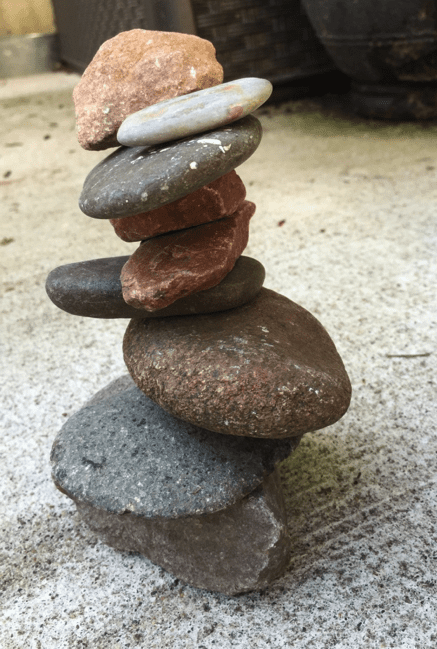
Stacking and balancing rocks requires imagination and creativity (the "A" in STEAM); some engineering savvy to design and build a rock stack that won't topple; math skills such as sorting and categorizing to find the best rocks for stacking; and science skills such as testing out hypotheses and gathering data as children learn about gravity and balance.
Because children are holding the physical history of our planet in their hands as they stack their rocks, you can even start this activity with a read-aloud book video like I'm Trying to Love Rocks.
Then check out this stone-stacking video for kids and tell them a little bit about the history of the stacked-stone sculptures they're about to build.
For the record, environmentalists strongly discourage this practice because it disrupts the natural order of nature. We follow that rule when we are hiking or playing in the woods. However, it's a different story at our early childhood center. Our outdoor classroom has a dry creek and some wonderful rocks that we've collected from parking lots and estate sales. These are our STEAM rocks.
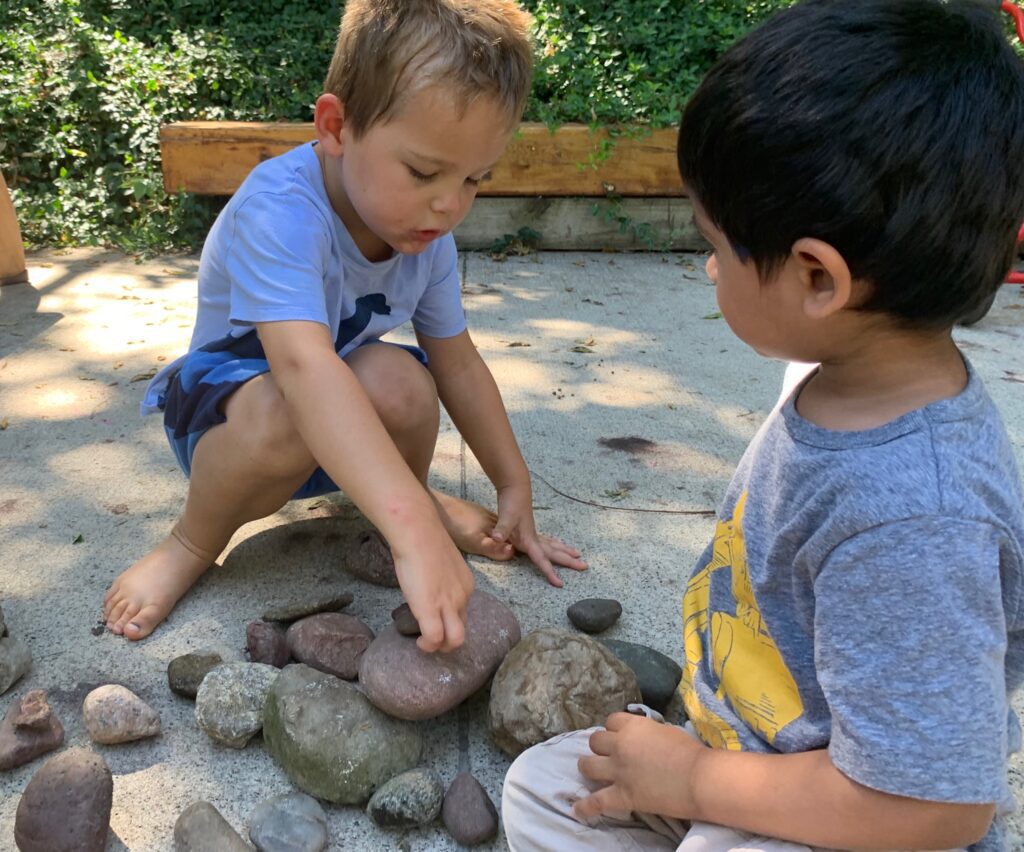
Children who are math-and-science-ready are great problem solvers.
When children explore the concept of stacking, they make observations, collect data, and investigate characteristics such as shape, size, and weight.
They count, estimate, balance, and hypothesize. It's science, math, language, and play—all wrapped up in the beauty of nature.
Nothing makes me happier than finding hidden stacks of rocks somewhere in our outdoor area—stacks left behind by inquisitive children who didn't need to please anyone but themselves.
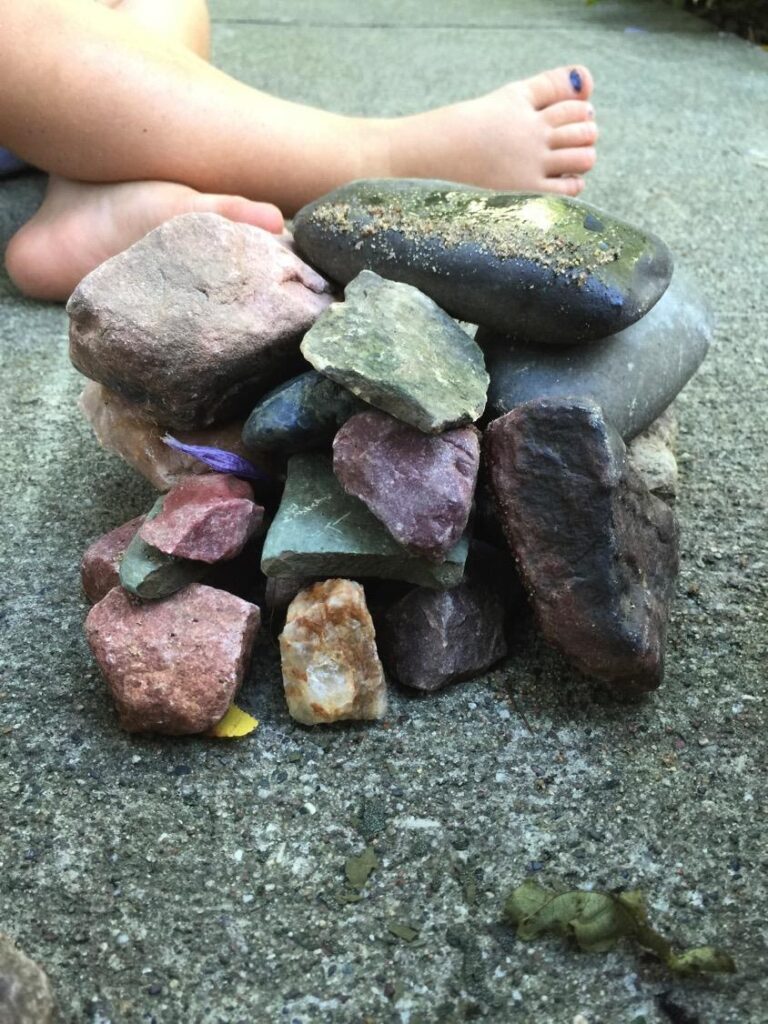
Rock stacking and balancing activities inspire young children to pursue math and science investigations that are always developmentally appropriate. When I observe a two-year-old child with an innate sense of how to balance more rocks than her much older peers, my adrenalin starts to flow. Children have their own unique gifts; we just need to give them opportunities like this one to discover their strengths and talents.
Two-year-old Lauren created the "ant house" featured in the photo above. I love that she decorated her house with flowers. I watched as she wandered over to the sandbox on the other side of the outdoor area and returned with a handful of sand to sprinkle on the ant house roof. I love her intentionality and vision. I love that she is barefoot with a toenail that is black and blue and may fall off, evidence of some already-forgotten adventure that didn't go as planned. I love that she is laying the foundation for later learning in math, science and engineering through play.
You can call it STEM, STEAM or STREAM, but it's basic childhood play. It's long hours of uninterrupted exploration as a child works to bring an idea to fruition. It's the brain on fire, building the synapses of learning. It's the cement in the foundation of a lifelong learner—the evolution of a visionary, problem-solving, risk-taking master.
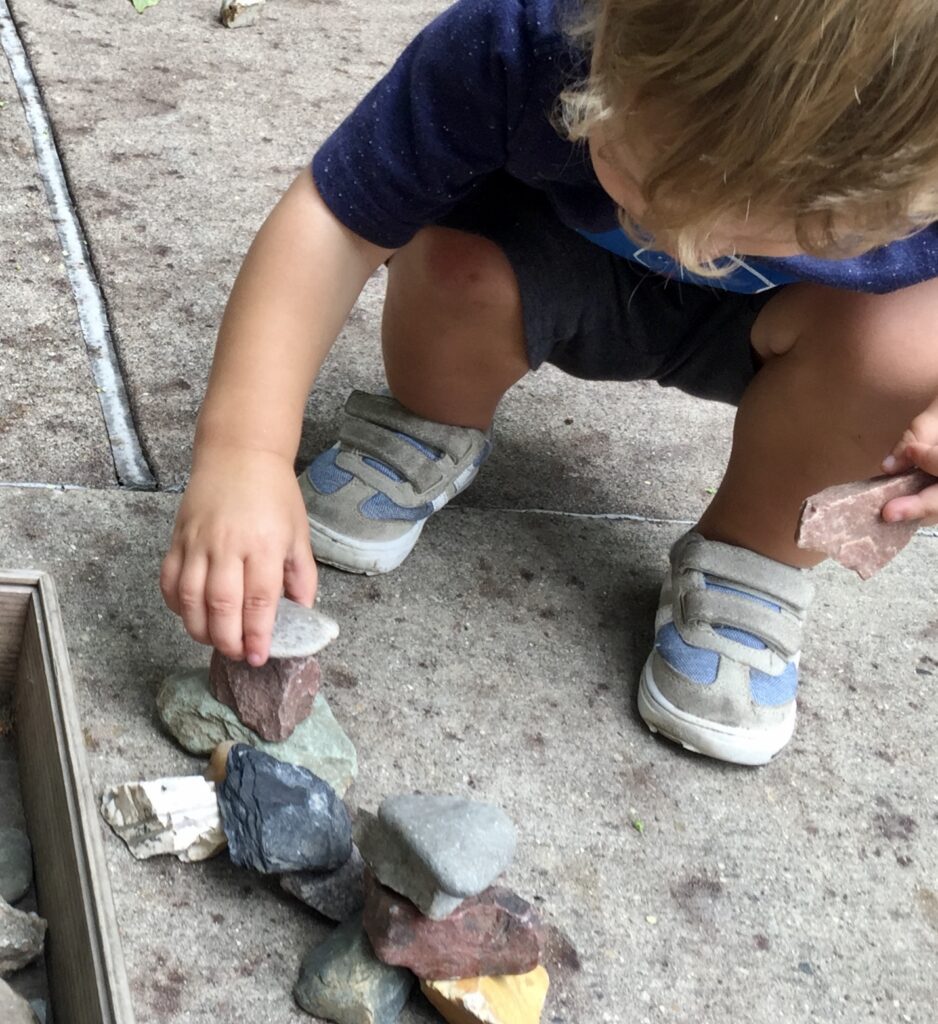
Educators often find it challenging to meet early learning standards or benchmarks. My tip for this is to introduce natural materials, give the children ample time to investigate and explore, and sit down to observe and document their learning with photos.
You'll be surprised to discover just how easy this can be. Engaging young children in daily problem-solving activities will help them develop the processing skills that will prepare them for future lessons in math and science.
Rock stacking is all about shapes and spatial reasoning. It's also about spatial orientation as our rock stackers exhibit an understanding of location and ordinal position.
Young children often meet standards and benchmarks before they have the vocabulary to tell us what they are doing. They gather data about their surroundings as they figure out how to balance a specific rock in the stack. If that rock won't balance, they'll try another. This is organizing data and information. They are busy making predictions about outcomes by playing with rocks.
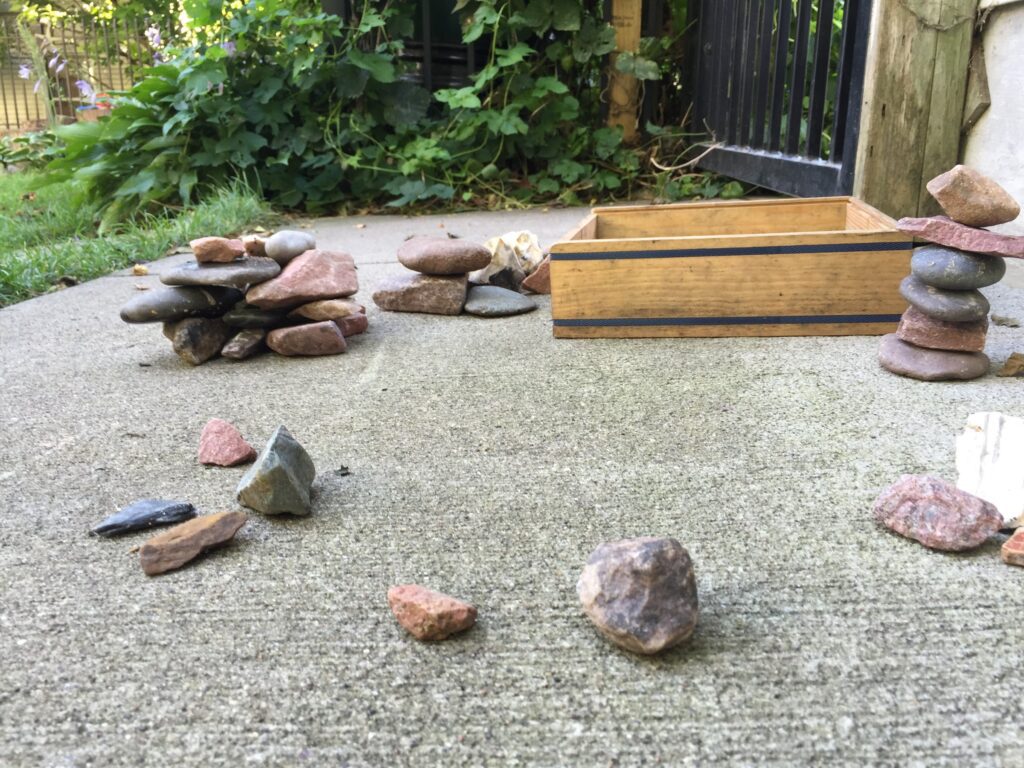
However, bear in mind that brain development varies in children. Some may not yet be ready to meet certain standards, while others may be advanced in certain areas but not others.
This is when you are smarter than the standards. You can't teach children concepts that their brains aren't developmentally ready to process.
But I can assure you that play is laying the foundation for the brain development and problem-solving skills that will serve your child well in school and in life.
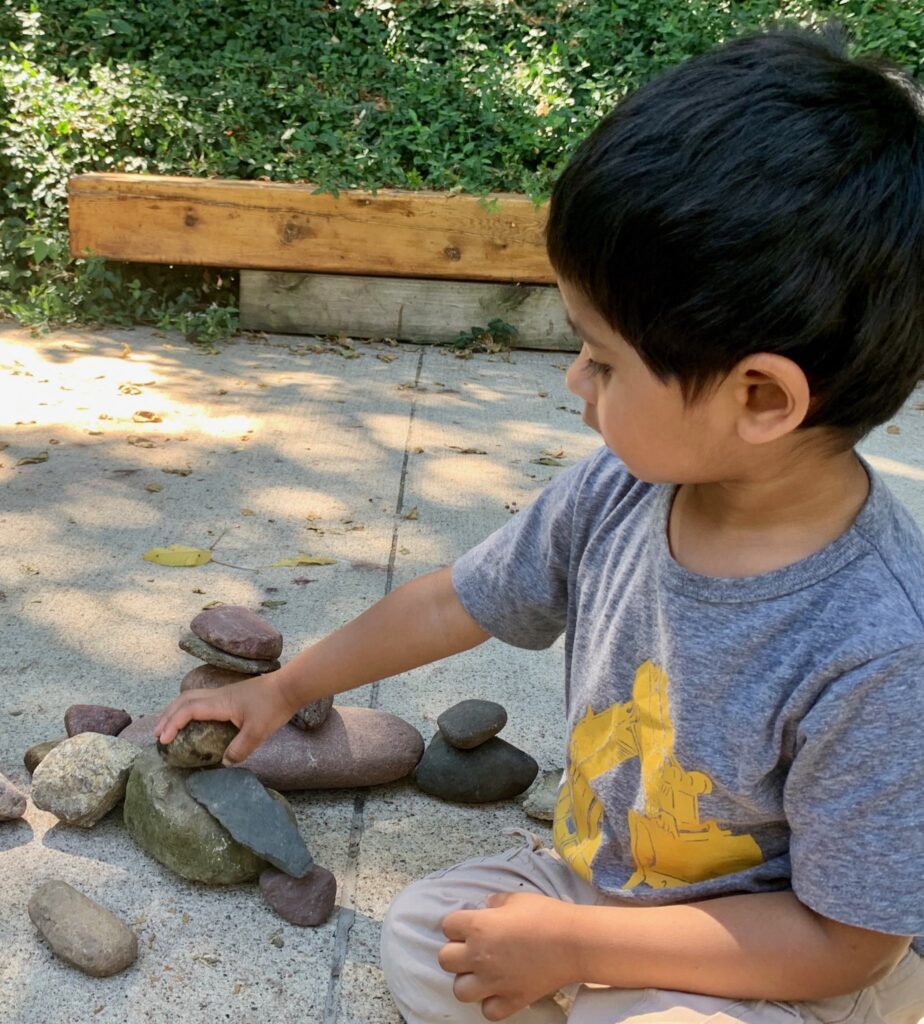
So bring in the rocks! Your child will soon be sorting, comparing, and working with attributes. Best of all, rock stacking is fun!
All good reasons to keep on rocking on!